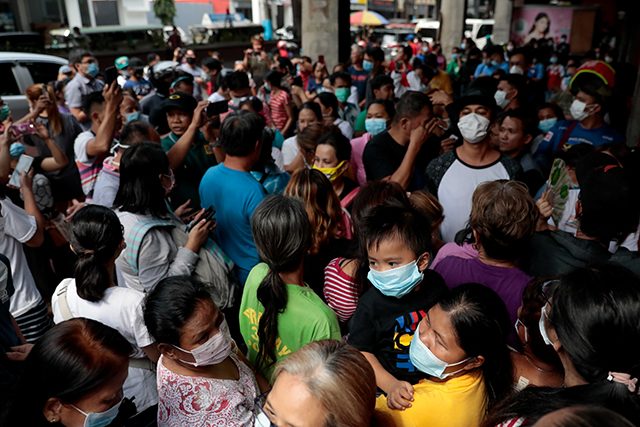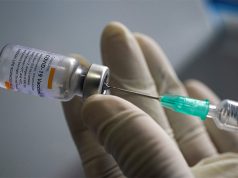
The novel coronavirus is a newly discovered communicable illness that has been taking the lives of hundreds of people in China and has recently reached the Philippines upon the arrival of at least three infected persons to date, one of whom already passed away.
The Department of Health confirmed on January 30 that a 38-year old Chinese woman who came from Wuhan, the ground zero of the new virus, is positive with the 2019-nCoV.
Then, the second case, the woman’s male companion, also tested positive. However, he died on February 1, therefore making him the first death outside China.
There are a number of questions lingering in the Philippines over the new virus, whose technical name is the 2019 novel coronavirus acute respiratory disease.
Questions and speculations
After arriving here on January 21, the Chinese woman visited the provinces of Cebu and Dumaguete before she sought medical help in Metro Manila.
It was only five days later or on January 25 when she was admitted to a government hospital in Manila after experiencing a mild cough.
The woman is currently isolated the infectious disease facility San Lazaro Hospital in Manila.
1. Did the confirmed cases—all Chinese nationals, so far—infect others in the Philippines, including Filipinos?
Filipinos are worried about the likelihood that the confirmed patient infected a number of people prior to being admitted.
Twitter user @ifyouseekkae pointed out two disturbing possibilities with the positive case.
“By the time the patient was diagnosed, it would have been days after she got it and she may have had contact with many other people. It’s almost impossible to avoid crowds in the Philippines,” the user said.
shet. disturbed talaga ko na may case na ng corona virus sa pinas because 1) by the time the patient was diagnosed, it would have been days after she got it and she may have had contact with many other people 2) it’s almost impossible to avoid crowds in Ph
— Kae (@ifyouseekkae) January 30, 2020
Another user also cited that some studies she read about how fast the illness can spread.
“Some studies says that one patient, on average, will have spread the virus to 5.5 other people,” the user said.
The Chinese woman inflicted with #coronavirus arrived on Jan 21, went to Cebu and Dumaguete. She “toured” 😱 for 4 days and is now admitted in a Manila hospital. WTF!
Some studies says that one patient, on average, will have spread the virus to 5.5 other people. 😢 https://t.co/hCk9GwbzAO
— 𝐌𝐢𝐬𝐬 𝐊𝐫𝐢𝐳𝐳𝐲 (@krizzy_kalerqui) January 30, 2020
Earlier reports mentioned the first confirmed nCoV patient in the Philippines as “asymptomatic,” that is not exhibiting any symptoms of the virus but is deemed a carrier of it. The World Health Organization has stressed that it is very rare that patients showing no symptoms will transmit the virus to other people.
2. Is the Philippine government being transparent in reporting confirmed cases?
One Twitter user, meanwhile, shared a screenshot of an infographic that claimed the Philippines already has four confirmed nCoV cases. It purportedly came from an article of the Sydney Morning Herald, an online magazine in Australia.
The user tagged the DOH in a tweet and attached the link.
Hello @DOHgov, can you please confirm or deny this.
Sabihan niyo naman kami kung mayroon na nga ba dito. Nauna pa ang Australia magbalita sa amin.
https://t.co/jJemvQV1ZL pic.twitter.com/U5XTTZeYLA— SOGIE bill now! LGBT rights are human rights! (@npclgs) January 30, 2020
The infographic, however, could not be found on the magazine’s webpage. Data from the World Health Organization also showed that the Philippines only holds one confirmed case.
The DOH, meanwhile, assured the public that it would send out updates regularly as it urged social media users not to spread unconfirmed reports and speculations. As of posting time, there are more than 115 persons under watch for having suspected nCoV, but only three cases and one death have been confirmed.
As of Tuesday, February 4, Health Secretary Francisco Duque, meanwhile, admitted said that 17% of more than 300 passengers on board the Philippine Airlines and Cebu Pacific flights the confirmed Chinese patients have taken were contacted.
3. Is there a cure for the virus?
Viruses, including the 2019-nCoV, that make people ill are notorious for being incurable, unlike bacteria. Medical practitioners usually recommend patients to take medicine and measures to treat their symptoms.
The symptoms and signs for the nCoV, being a newly discovered pathogen, are constantly changing and no specific treatment or cure has been found yet.
There are, however, signs that we can be optimistic about science. In Thailand, a drug cocktail used to treat HIV patients showed early signs of success.
4. At what stage is the virus contagious? How many people could the patients in the Philippines have infected?
The Centers for Disease Control and Prevention stated that the basic symptoms are fever, cough and shortness of breath.
According to health authorities’ best estimates, the incubation period or the period when the symptoms would appear can be as few as two days or as long as 14 days after being exposed. This theory, however, is only based on the incubation period of other coronavirus strains, thus are subject to change depending on the cases of the newer patients.
Chinese scientists also reported that all of their patients have pneumonia.
Unfortunately, scientists have yet to determine the exact stage when the new pathogen is contagious.
For now, they can only estimate how fast the virus can spread and how many people can be infected by one patient.
Estimates range from a “base reproduction rate” of 1.4 to 3.8 people or it could spread to 5.5 other people, an article from Science Alert explained. Scientists at the Imperial College London estimated that an infected patient can transmit the virus to an average 2.6 other people.
Some of the uncertainties about the new virus are being answered as new cases arise and as researchers and health practitioners make new discoveries. Bookmark Philstar.com‘s live updates for developments in the Philippines and As It Happens thread for international developments.









